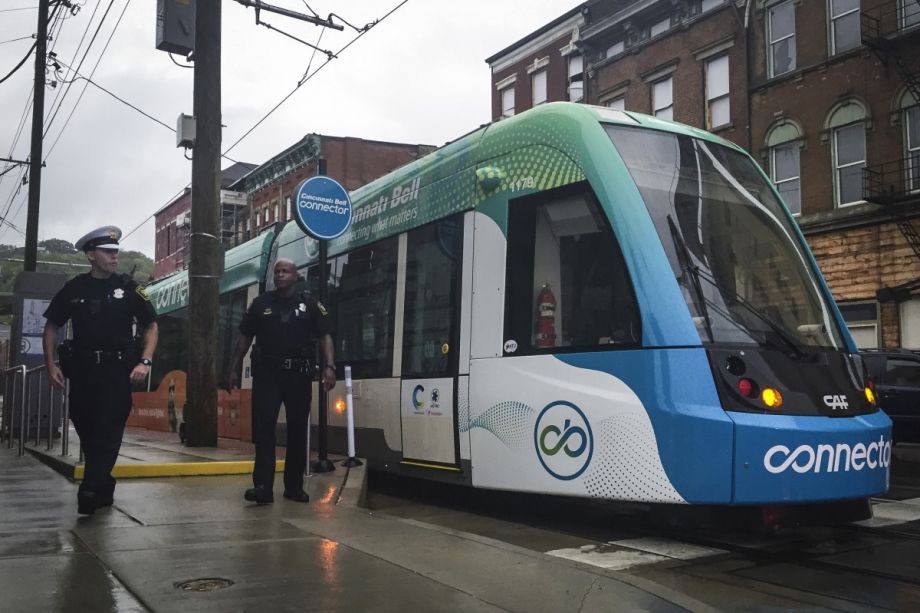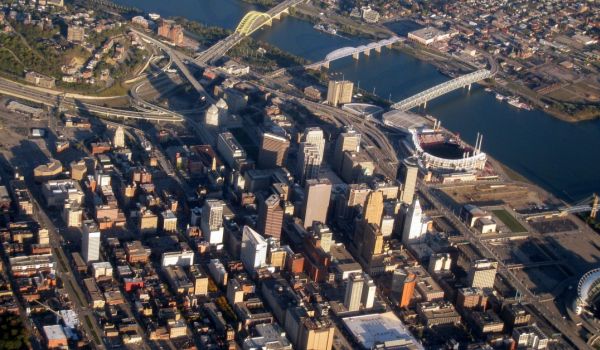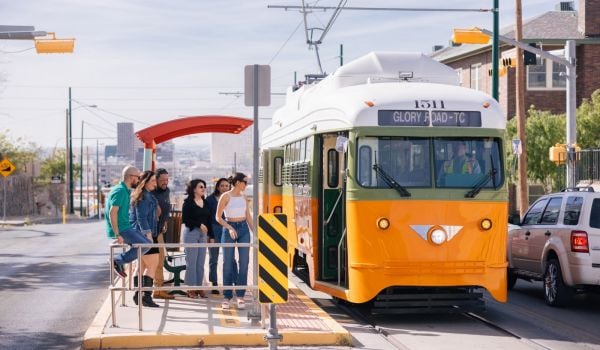After nearly a decade of heated political battles — including two ballot measures to kill it and opposition from a mayor, a governor and members of city council — the Cincinnati Bell Connector streetcar finally got rolling on Sept. 9. Drawn by excitement for the new trains or perhaps the chance for a free ride, over 50,000 people gave the streetcar a try its opening weekend.
The 3.6-mile route loops through Cincinnati’s downtown core — from the Over-the-Rhine neighborhood in the north to the Banks neighborhood near the Ohio River in the south. Paid rides — $1 for 2 hours, $2 for an all-day pass — began last Monday.
As is often the case with streetcars, Cincinnati’s explicit goal for the Bell Connector is economic development. The city has lost about 200,000 residents since the early 1950s, and officials are betting $148 million that the streetcar will help bring some back.
“There are transportation benefits, safety benefits, environmental benefits, but really it’s about economic development along the route,” says John Schneider, a former real estate developer and longtime streetcar advocate.
The route passes by many of the city’s museums, music venues, the central Washington Park, and down to sports stadiums. It also comes within a few blocks of six Fortune 500 companies. Schneider says now that regular service has started, he’s seen office workers using it for lunch runs and people using it in the evenings to go out to dinner or catch a Reds game.
“We’re centering the route on people who live and work downtown … . People are using it for everyday things instead of as an amusement ride for tourists.”
On Friday, the line’s operator, Southwest Ohio Regional Transit Authority, said ridership numbers for the first week of paying passengers hit set goals, with an average 3,185 people per day from Monday to Thursday. (In a 2010 TIGER II grant application, the agency predicted 6,640 daily riders in the first year of operations. A 2007 feasibility study predicted 3,700 a day with a $1 fare.) Schneider is optimistic passenger numbers will stay high, especially if the city can work out some of the kinks, such as signal prioritization to speed up the line and clearing up first-week confusion about ticket vending machines.
Streetcars are often criticized for drawing poor ridership, especially given how much more they cost than buses. Kansas City’s new 2.2-mile streetcar line launched in May with 12,000 to 14,000 riders a day its first weekend. It has settled into a respectable average of just over 6,000 daily riders. D.C.’s long-delayed (and often maligned) streetcar is averaging just over 2,700 daily riders on its 2.2-mile route.
Future expansion would certainly help maintain good ridership for the Bell Connector. Transit advocates are already pushing the idea of not only extending the route north to connect with the University of Cincinnati and the nearby hospitals, but doing so with dedicated right-of-way and even transit tunnels.
“As we look to expand, speed becomes more of a priority,” says Derek Bauman, Southwest Ohio Director for All Aboard Ohio. “If you’re looking at a mixed traffic route to uptown it’s not going to be fast enough to be a spine for future light-rail expansion.”
Bauman points out the streetcar line was built to light-rail standards and is using light-rail-quality cars to help facilitate regional transit in years to come.
“Our first goal was dual purpose: economic development and to have an urban circulator,” Bauman says. “It becomes more about transportation with the coming expansions.”
Granted there’s still plenty of political opposition to the streetcar and no guarantee it will expand. But Bauman is optimistic.
“There is an energy now after a decade of political battle over this first phase. People derided it as an amusement park ride or a tourist trolley, but it’s sleek and modern and smooth and quiet. It has definitely opened a lot of eyes.”
Editor’s Note: Ridership predictions for the streetcar line from 2007 and 2010 have been added to this article.

Josh Cohen is Crosscut’s city reporter covering Seattle government, politics and the issues that shape life in the city.
Follow Josh .(JavaScript must be enabled to view this email address)











